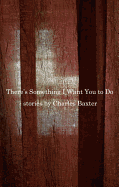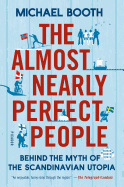 |
| photo: Beri Irving |
Ravi Howard won the 2008 Ernest J. Gaines Award for Literary Excellence for his novel, Like Trees, Walking, and was a finalist for the Hemingway Foundation/PEN Award. Howard has received fellowships and awards from the National Endowment for the Arts, Hurston-Wright Foundation, Bread Loaf Writers' Conference and the New Jersey Council on the Arts. Howard's work has appeared in Callaloo, Massachusetts Review, the New York Times and on NPR's All Things Considered. As a sports producer with NFL Films, he won an Emmy in 2005 for his work on Inside the NFL. He lives in Atlanta, Ga. His second novel is Driving the King (reviewed here).
What inspired you to write Driving the King? Are you a Nat King Cole fan?
I grew up in Montgomery, Ala., and I remember when I found out Nat Cole was born there. I must have been about 10 years old, and I took a black history tour of Montgomery. Many of the stops were familiar because of the Bus Boycott stories I'd heard. We rode around town on city buses, and we stopped in front of Nat Cole's childhood home. Hearing his name was a surprise. His music was a Christmas staple, but I did not think of his biography until I was sitting in front of his old house.
I remember when Natalie Cole remade "Unforgettable" as a duet and a music video. It was a mix of something classic with a technology that was new in the 1990s. Maybe the book takes a similar approach, mixing an old voice with imagination to make something new.
Do you have a favorite Nat King Cole song?
I discovered so many songs during the writing process, but I always come back to "Let's Face the Music and Dance" as one of my top favorites. The first line of the song gives the feel I wanted to capture in the novel: "There may be trouble ahead."
How did you learn about the incident where Cole was assaulted on stage?
I can't remember when I learned of the attack on Nat Cole, but it was one of those events that fit with the violent history of Birmingham during Jim Crow. I took some license and moved the attack to Montgomery, but both cities had histories of violence and activism that responded to it. Nat Cole and other musicians operated in the same way, trying to find an artful response to the world around them. He moved beyond the attack, but he never returned to Alabama. The book looks at what a return to Montgomery might have looked like.
 Nat Weary, the narrator of Driving the King, is fictional. But is he based on an historical figure--or a colleague or friend of Cole's?
Nat Weary, the narrator of Driving the King, is fictional. But is he based on an historical figure--or a colleague or friend of Cole's?
I wanted Nat Weary to be a part of the ensemble that gathers around famous musicians. Many were also musicians who found work in supporting roles. They didn't become famous, but they were necessary.
That sense of the ensemble was also a part of my education on the Montgomery Cole revisits [in the book]. Rosa Parks and Martin Luther King, Jr., became the marquee names of the moment, but Nat Weary knew many of the people in the chorus. I'm drawn to that behind-the-scenes feeling, and I made Weary a composite of those players.
Whom did you talk to during your research? Did you travel to any significant places in Nat King Cole's life?
I made a few trips to Los Angeles and Montgomery. Even though I grew up in Montgomery, I learned something new on each visit. The Centennial Hotel is actually the Ben Moore Hotel, which was central to some events during the Bus Boycott. It's been closed for more than 40 years, but the owner gave me a tour. My mother saw Martin Luther King, Jr., on an elevator when she was attending a college social there. So it's fun to have some personal history with some of the places in the book.
I spent much of my time in Los Angeles driving, getting a feel for the trips from Nat's house in Hancock Park to the studios of Capitol Records and NBC. I was alone in a rental car, but I had to imagine what words were exchanged as Nat Cole and Weary made those drives every day. Even when I saw those historical places, I had to leave room for the imagination and erase the years of change.
I love Almena Lomax's character--I'd never heard of her before. How did you decide to include her in the story?
I found Almena Lomax late in the writing process. I knew of her work, but only because of her byline. I didn't know the full story of how she left Los Angeles and moved to Alabama with her children to write about the Civil Rights Movement. I saw her son, Michael Lomax, on an HBO documentary, The Black List. Shortly after her death a few years ago, Almena Lomax's papers were donated to Emory University. I read through them and got a feel for her voice and activism. I wouldn't have a book without her voice.
Probably my favorite thing about the book is the prose--Nat Weary's voice is so rich and smooth (like his favorite liquor). I know it's hard to explain how you write, but is there anything that helped you get his voice into your head?
Thanks for that. I wanted to make him a speaking balladeer. Ballads have this confessional nature to them. The emotion isn't necessarily raw, because the singers and writers have lived with those ideas before they deliver them. I wanted to find a conversational space that mimicked the ballad. I wanted the words to feel lived-in.
Anything fascinating you came across in your research that didn't make it into the book?
I found so many great performances from Nat on his television show and years of guest appearances on other programs. He was performing in Las Vegas during a time of great music and racial tension. I wanted to include so much of that, but I also wanted the work to flow toward Montgomery. I wanted to avoid an epic feel, because biographers do that well. I wanted a tighter circle of moments. One of the toughest parts of structuring and revising is leaving out ideas that I love. But it is necessary to pace the story.
A thought to leave with us?
I used as an epigram a quote from Albert Murray's The Hero and the Blues: "The art of fiction is an art of make-believe." Historical fiction is also about giving the reader a presence in the make-believe, remembered space. I've always tried to bring that to the work, and I've enjoyed that process. --Katie Noah Gibson, blogger at Cakes, Tea and Dreams
Ravi Howard: The Remembered Space
 Lomax was not the only groundbreaking black woman in journalism. In the early '50s, Ethel Payne was hired by the Chicago Defender and took over its Washington, D.C., bureau a few years later. She covered international news and civil rights, including the Montgomery bus boycott. She reported from Vietnam, from China, from Africa with Henry Kissinger. Payne was known as the "First Lady of the Black Press," and James McGrath Morris has written a biography of this remarkable woman, Eye on the Struggle (Amistad, February 17).
Lomax was not the only groundbreaking black woman in journalism. In the early '50s, Ethel Payne was hired by the Chicago Defender and took over its Washington, D.C., bureau a few years later. She covered international news and civil rights, including the Montgomery bus boycott. She reported from Vietnam, from China, from Africa with Henry Kissinger. Payne was known as the "First Lady of the Black Press," and James McGrath Morris has written a biography of this remarkable woman, Eye on the Struggle (Amistad, February 17).



 Nat Weary, the narrator of Driving the King, is fictional. But is he based on an historical figure--or a colleague or friend of Cole's?
Nat Weary, the narrator of Driving the King, is fictional. But is he based on an historical figure--or a colleague or friend of Cole's?










